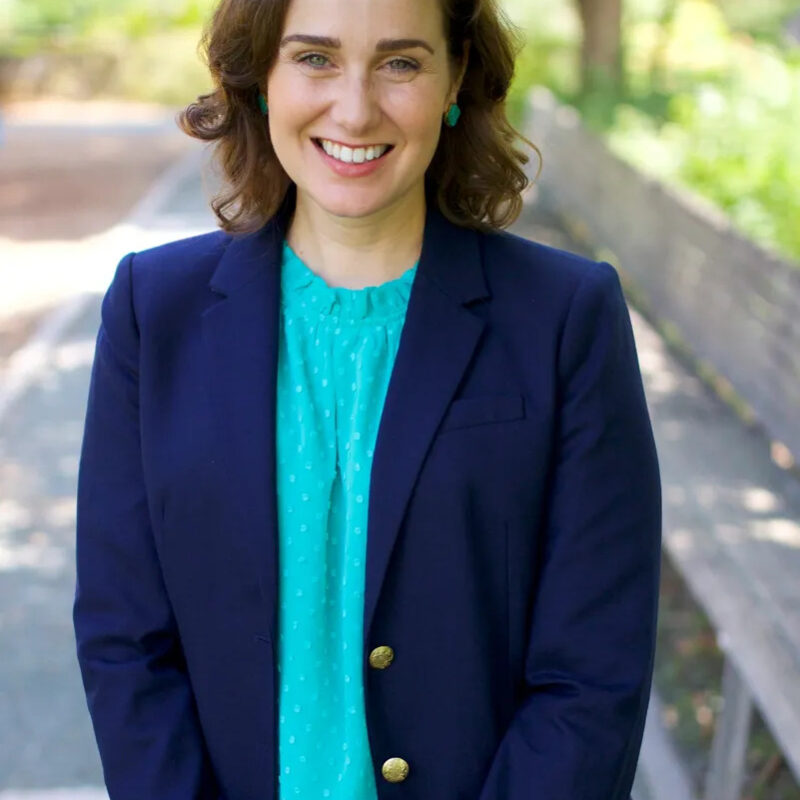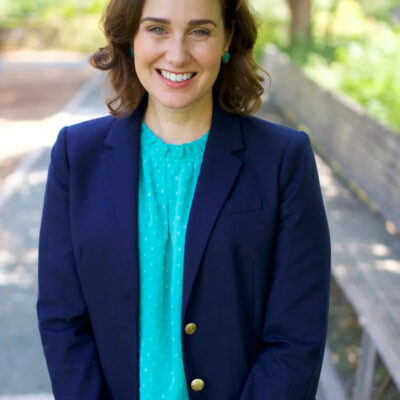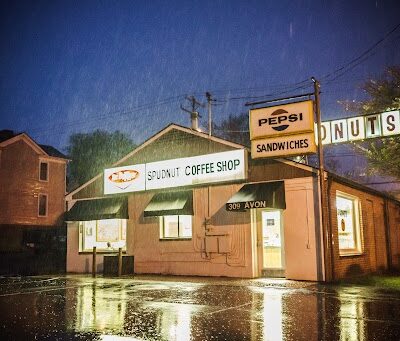The night of the Charlottesville High School prom, April 26, it’s raining. In front of the school, three kids are standing under an overhang to keep their hairdos and clothes out of the drizzle. A lone white limo lumbers away from the curb.
 |
Most everybody who’s going to come is already here. They’ve already walked the paper carpet up to the sign-in table, then pushed through a line of doors to a wide hallway running the length of the gym. Low, rough party sounds, voices and bass, seep from inside.
More feature articles A life in pictures Dwindling supply Mark in CharlottesvilleAs part of the Festival of the Photograph, Mary Ellen Mark will be one of three headlining artists (the others are Joel-Peter Witkin and James Nachtwey). Learn more about her at these festival events: INsight conversation with NPR’s Alex Chadwick Exhibition of prom photos Screening of two films by Martin Bell, Mark’s husband and collaborator Alexander: Extraordinary Child and Twins |
Across the hallway, inside the black box theatre, Meredith Lue is tacking a giant black-and-white photo to the wall. Meredith’s here from New York to assist the photographer Mary Ellen Mark on a project documenting American proms. So is Mark’s husband, the filmmaker Martin Bell. So are a bunch of assistants from Bard College. So are two people who work for Polaroid. There are a handful of organizers here from the Festival of the Photograph (Mark’s a festival headliner this year), donors, local photographers, a reporter from The Washington Post, and me. There must be at least 30 people in the room. And there are ladders, powerful lights, reflector umbrellas, a 15′ backdrop, a temporary floor, moveable walls, flight cases full of gear, and, of course, Mark herself.
The couple in the photo are named Paul and Rickeyla. He’s a pale white kid with a heavy silver watch pushing up the cuff of his jacket. She’s a heavy African-American girl in a black dress, stately and knowing, her hand on her belly, her white corsage and baby-faced date the only clues to her age. They stare soberly out of the oversize print, looking like the perfect illustration of an improbable couple.
Mary Ellen Mark pops out between two moveable walls, slightly harried, squinting as though her glasses aren’t quite strong enough. Long dark braids lay on her back; she wears a dark tunic, flat black sandals, and lots of silver jewelry, to vaguely Navajo effect. On her way to the photo wall, Meredith pulls her aside briefly for some minor question; then she huddles with her husband in front of the print of Paul and Rickeyla.
I’ve been looking at Mark’s photos since I was 12, and this is the first time I’ve seen her in person. Somehow, though, it’s more of a thrill to turn around and see Paul and Rickeyla, live, in front of the big white backdrop. He has red hair, I see now. She’s sitting down for the moment, her feet slipped out of her shoes; he’s grinning at her, and they’re talking, her voice sounding younger than she looks.
“I’m going way too slowly,” Mark says, re-entering the set. “One last one?”
As the bio sent to me by the festival puts it, New York-based Mary Ellen Mark “has been awarded virtually every honor that can be bestowed upon a photographer.” Her work shows up in places like Vanity Fair and the Whitney Museum; she’s had a four-decade career traveling the country and the world, and at age 68, she’s published 16 books. It’s doubtful whether the high school kids she’s photographing these days realize exactly how eminent she is.
Still, they must sense the sophistication and resources at play. I’d talked with Mark by phone a few days before the prom and asked her, in her travels over the last two years to proms from Cape Cod to Texas, how attentive she found her subjects to be to her camera. “They’ve been very tuned in,” she said. “In portraiture, people are very aware.”
 Setting up a shot of Mandy and Candy. |
Now I realize that practically no one, even teenagers, could fail to respond to the increasingly smaller circles that lead to the bull’s-eye of this spot inside Mark’s gaze. Every layer has its own human face, from the roving scouts who prowl the party, taking snapshots of interesting-looking kids, to the woman with a clipboard keeping track of names and release forms, to the guy in cargo pants helping with the equipment. One must win approval from the artist, submit to a brief interview, and wait around at a folding table before stepping under the lights—a spot that, after passing all those gatekeepers, seems positively holy.
And then there’s the camera. Even without knowing that this 20"x24" Polaroid Land camera is one of only six that exist on Earth; even without knowing that the special oversize paper it requires, which allows an unusually fine level of detail, has been discontinued, or that Mark’s prom project will use up all that is left—no one would look into the lens of this machine and not take notice.
Rickeyla stands up from her chair. She and Paul resume their simple, frontal pose, Mark counts to three and then, using a cable release, takes a shot with a blinding pop. “I think we have it,” she says, leaving the set again. From behind the camera, a green-shirted assistant says, “Don’t let them go—it’s a little bit off on top. I know you don’t always mind, but…” She and Mark talk intently for a minute, Mark moving in and out of the set, calling back and forth to several other helpers, sometimes speaking in numbers. They’re trying to decide whether to use another sheet of the precious paper on this couple. The kids stand and wait, black and white fingers interlaced, her long earrings folded onto her shoulders.
Mark decides she has enough good shots of these two, saying again that things are moving too slowly. And so Paul and Rickeyla leave the set and the next couple comes in.
Now in her third season of photographing proms, Mark has seen a basic similarity among American teenagers. “I find the country’s pretty much joined now,” she told me, “by the Internet and TV.” Still, she said, “I guess in Charlottesville I’m looking for something more traditional and Southern.” So far, though, her chosen subjects don’t exactly seem like they just exited the grandstand at Churchill Downs.
 Examining a 20"x24" print on the viewing table. |
Helen and Andy, who have just arrived, are both white. They’re dressed, but not to kill: She wears a cotton sundress, he’s in a blue blazer and khakis. She’s a head taller than he, the effect exaggerated by her chunky heels, and he’s got a comical, Einstein shock of hair. They have the manner of wry, good-hearted people, Helen self-assured as Mark meets and chats with them, but a tiny bit embarrassed by questions about whether she and Andy are dating (they are) and how long they’ve been together (six months). Just outside the sphere of the camera, Martin Bell and the assistants are already measuring light levels and shifting moveable walls.
Mark is efficient in her appraisal of how these two should confront the camera: straight on, leaning their heads together. It takes a while to get the shot set up, the room murmuring with low technical talk, and while they’re waiting, Andy, who seems to be a bit of a smartass, keeps making Helen giggle. Finally Martin Bell calls, “Ready? Ready?” Mark says to the kids “Look not at me but at the camera,” adjusts Helen’s left hand, and pops the shutter.
Now the focus shifts again from the bright, clean world under the lights to the dimmer zone outside the set. Mark shuffles toward a table as the green-shirted assistant lays down the fresh print; everybody waits for it to develop, a buzzer sounds and then another young woman—this seems to be her entire role—peels a film off the print to reveal the image.
With the Polaroid 20"x24" camera, just as with the more familiar consumer Polaroids, there is no negative. Each exposure produces one print, on the spot, with no opportunity to fudge imperfections later in the darkroom, as you can with a negative. The film and the print are one and the same. And Mark doesn’t like this shot. It’s the pose—too sweet, maybe. “I need to separate them,” she says. As she returns to Helen and Andy, putting them in a simpler side-by-side position, Meredith Lue takes the print and tacks it to the wall, then fires up a hair dryer and points it at some of the other prints hanging nearby.
In the new pose, Helen and Andy take on a touching dimension. He’s looking up at her, fondly but somehow unsure. She’s serene, maternal, a tiny bit sad. When the new print hits the table, but before the film comes off, Mark says to Bell, “I want to see if I like it or not. If I don’t, we’ll move onto the next”—meaning the next couple. It’s a minute before the print is ready, Helen and Andy unaware of how they hang in the balance, Mark and Bell and the assistant all gazing silently at the floor. The buzzer sounds. Bell turns on a spotlight. “Much better. Much better. Much better,” says Mark. “That’s beautiful.”
She wants to take three more prints now, all in a row. I’ve been told by Meredith that the goal tonight is four good prints of each chosen couple. Assuming that’s been true for each of the hundred or so couples Mark has shot during this project, we’re talking about 400 photos, more or less. In the age of digital photography, that’s an absurdly tiny number for a three-year project.
Standing behind the camera to watch as the three Helen and Andy shots are taken, though, I can see why shooting with abandon is not possible. Even if there were an unlimited supply of the 20"x24" paper, these prints would still be intensely demanding to produce. The green-shirted assistant’s name is Jen, it turns out, and she deserves a title more like “engineer,” as she works for a Polaroid studio, not for Mark, and seems to be doing most of the physical work of operating the camera apart from actually releasing the shutter.
 Adjusting Patrick’s hands on Emily’s back. |
Massive, timeless, the camera has a lens that accordions outward from its body and a red color with a worn patina like the door of a Mexican saloon. “POLAROID LAND” is stenciled magnificently across its front, the way “EMPIRE BUILDER” might be emblazoned on a cross-country passenger train. It sits not on a tripod but on a sturdy metal cart. It’s more like a vehicle than a camera.
Jen, meanwhile, has the manner of someone whose way you want to stay out of—official and, for the moment, humorless, with a tiny flashlight and a yellow utility knife stuck in the back pocket of her jeans. Loudly, she announces “Open,” then swings open the entire back of the camera—as though it were a kitchen cabinet—in order to load a sheet of paper. Bell stands atop a 7′ ladder nearby, with an enormous flash. Mark, near the kids, says, “I moved him a little bit” and asks Jen to check the focus. Jen does and says, “Camera is ready” as Mark murmurs “Beautiful, beautiful” to Helen and Andy, counts to three, and pulls the trigger. Jen kneels, grabs the bottom of the paper where it sticks an inch or so out the bottom of the camera, and pulls down with considerable force until nearly the whole print hangs down. Then she takes a paper towel in each hand and runs it down the edges of the paper before she pulls the print entirely free and carries it to the viewing table.
“I’m always interested in rites of passage,” Mark had told me, by way of explaining her interest in proms. It occurs to me that with a camera like this, so different than the handheld gadgets that pervade our lives now, the photograph itself regains some of its ceremony, its 19th-century solemnity, the feeling that having your picture taken actually changes you in some way. Indeed, the four photographs of Helen and Andy now tacked to the wall contain such bare confrontation of who they are, such a feeling of stop for a moment and look, that I feel I might be seeing them more fully than I would if I looked into their living faces.
Here’s another couple. They’re dressed to the absolute nines. The dress is exactly the same shade of yellow as the four handkerchief points in the jacket pocket, the vest and the tie. The collared shirt is black, the shoes are mirror-shiny. A row of tiny rhinestones circles the girl’s waist; she has a tiara on her head, and the hem of her long skirt makes a delicate satin pile on the floor.
I keep looking at her date. The two of them both have rather angelic faces, but this kid in the tux is just devastating, with perfectly clear skin, dark, lovely eyes and a long shaggy haircut. Is he a she? I start to wonder.
He/she is cool as a cucumber, standing with the satisfied air of someone escorting a pretty girl, looking down at her upturned face and then out toward the world, speaking for both of them. They’ve had one shot taken and now, while Mark and her crew are off examining the print, they’re left alone together in the momentarily private world of the set, bathed in light, talking softly.
Mark returns, says “It’s beautiful,” and adjusts their hands slightly. “Martin, look at the hands,” she says. “Yeah, that’s better,” he calls.
After a couple of shots are tacked up, I go to the wall. It’s stunningly clear: Of course these are two girls. How could I have thought the taller girl was a boy? In the prints, she’s lost all that subtle bravado, all the protective confidence that she projects in the room. She’s so young, and so fragile. She looks right into the camera, and the girl in the yellow dress looks up at her.
Though the noise of the prom does filter into the black box, we’re in a largely separate universe here. It reminds me of a film set, which is an environment in which Mark once spent a lot of time as a set photographer on various films. One of her most famous photos is Federico Fellini on the set of Satyricon, bellowing through a bullhorn like some kind of prophet of cinema.
Compared to the iconic figure in that image, Mark’s presence in this room is somewhat diluted. There’s so much to keep track of technically, and so many people buzzing around, among whom she moves like a kindly but slightly impatient grandmother. But, given the projects by which she’s made her reputation, she must have a formidable will. Her books document homeless kids in Seattle, prostitutes in India, circus performers in Mexico. She’s traveled in very tough places, and she’s come back with the kind of images that get seen, and seen, and seen.
“What makes a picture is mysterious. I just can’t define it. It just is; it just works,” she’d told me. Now, in a relatively safe place, she’s turning her lens on the most mainstream of American rituals, and that mysterious something still seems to be happening.
Right now she’s shooting Emily and Patrick. Emily’s a soccer star, someone near me whispers. She and Patrick are both very tall, movie star material, powerful and lucky.
Between shots, Mark goes to a table where her roving assistants have laid out snapshots of possible subjects, kids they singled out from the throng. It’s getting late, the prom king and queen will be in soon for their portrait, and she needs to figure out who else she can fit into the schedule. “I love these three,” she says. “And these guys all together”—four black guys, sans dates, crowded into one snapshot. Meredith comes over. “Let’s get the dudes,” Mark says, “all four dudes.”
“That will take a while to round up,” Meredith says.
Less interested in Emily and Patrick than in the other couples, I wander toward the intake area, where three kids are getting interviewed. One girl, lanky and dark-haired, wears a black dress, leopard-print high-top sneakers, and leopard-print gloves, and carries a leopard-print clutch. She’s leaning on the back of a plastic chair, where a tiny redhead sits wearing an emerald sundress. In the other seat is a tux-clad, very young-looking boy with spiky hair. They’re all having a grand time, cracking each other up, the leopard lady throwing back her head to laugh. Asked what his plans are after graduation, the boy, Daniel, says his first choice is Cornell. Asked what their plans are after the prom, they say they don’t know; they’ll probably watch some YouTube.
Mark comes over to size them up. She asks at least twice which two of them are dates, but they insist they’re all together. Mark asks again, do they want to be photographed together? Yes, they do. Mark doesn’t seem entirely happy about this, but she does like the fact that the redhead is wearing no shoes. It’ll be soon, she promises them. I like this little group; they’re having the most fun, not too hip to go to prom but wise enough to take it lightly.
The dudes have arrived. They’re huge. Linebackers? In their formal jackets, they’re wide as bridge piers; three of them stand to the side, legs apart, hunched over to fill out release forms on clipboards as though they were attacking plates of ribs. One wears a white tux and alligator shoes.
Meredith ushers the threesome onto the set. The backdrop on this side doesn’t go all the way to the floor, and I can see their feet underneath it as they get in position, the smaller girl’s naked toes in the middle between the leopard-skin high-tops and the black tux shoes.
I step out of the black box, out of this transplanted pocket of New York, and back into Charlottesville. In the lobby, the lights are harsh and girls clack around awkwardly on heels. Kids knot themselves into groups among potted ferns and wooden benches. Framed sports photos are hung above the gym doors. I spot Helen and Andy with a bunch of friends, each talking to a different little group, stripped of the special luster they seemed to wear under the black box lights.
At the end of the hallway, her one small studio light totally overwhelmed by the fluorescents on the ceiling, a woman photographer is taking prom portraits. She’s got a small camera on a tripod and no assistant. The backdrop is an odd, airbrushed scene: a path winds through a park and over a bridge; the New York skyline, including the twin towers, is silhouetted against a sky both filled with stars and rouged with sunset. A couple faces the camera, smiling broadly, the girl vamping a little in her sequined dress.





